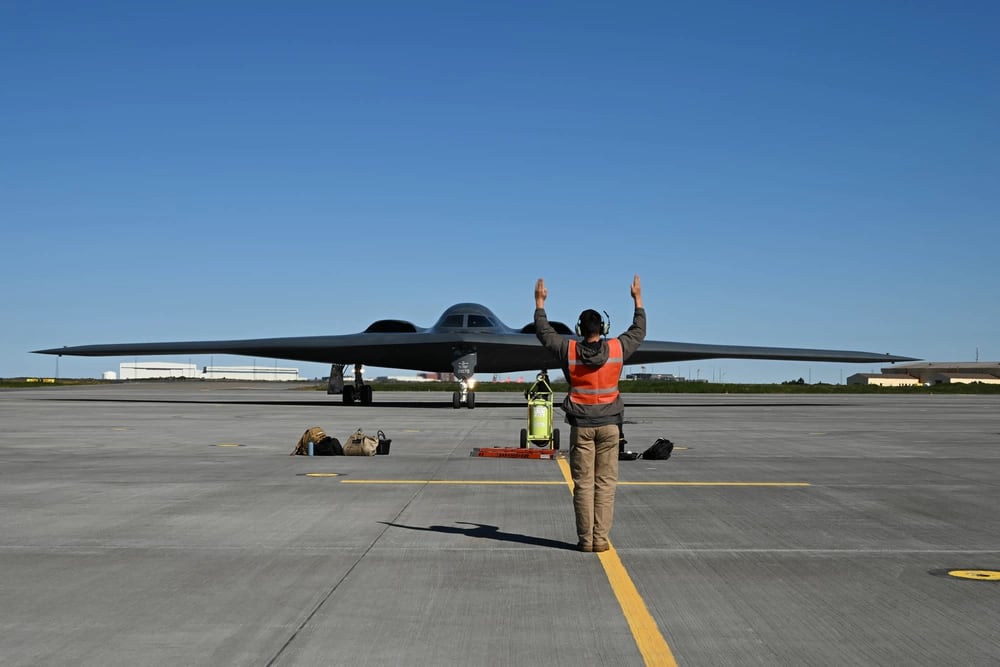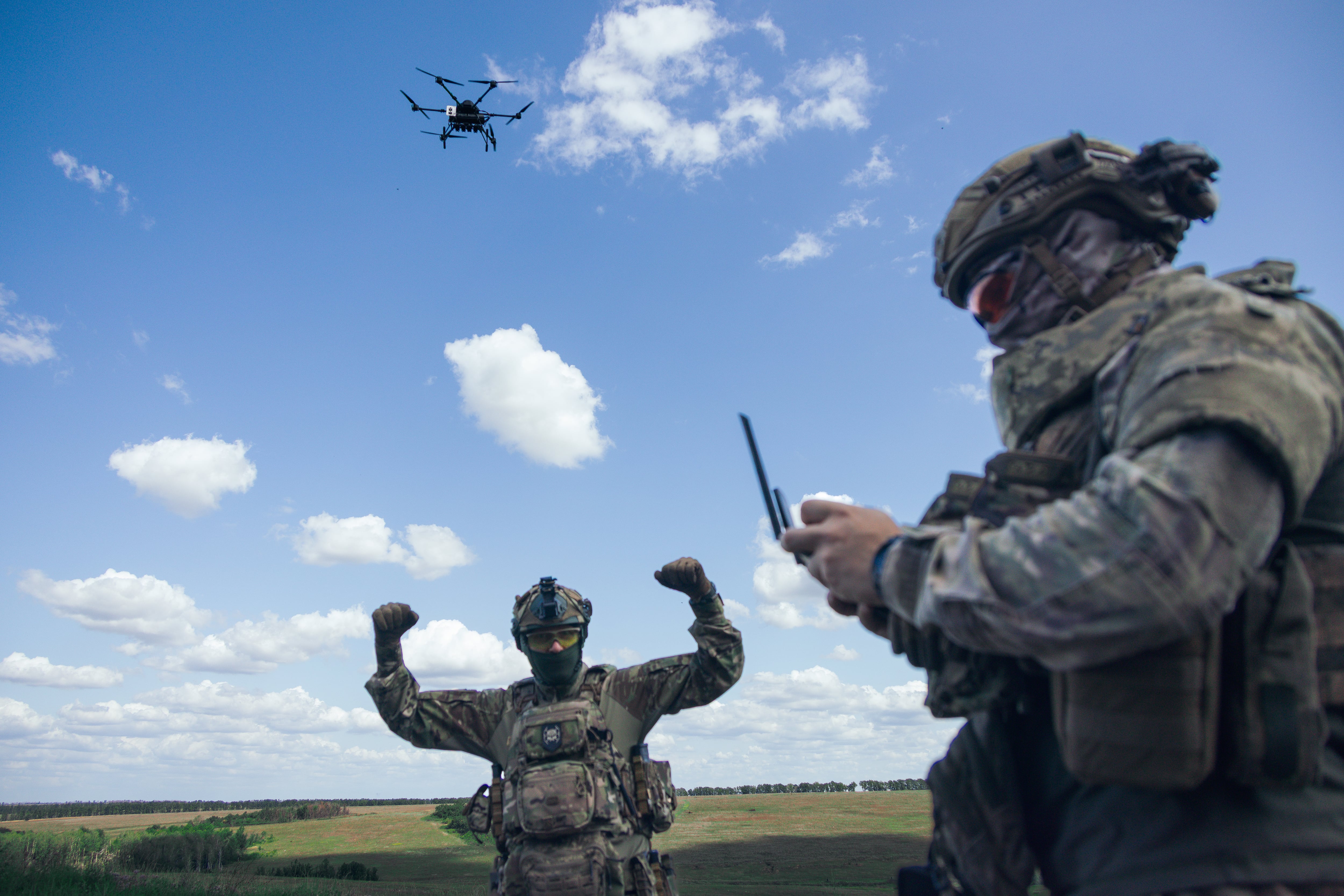A bomber task force comprising 150 airmen and three B-2 Spirit aircraft from Whiteman Air Force Base, Missouri, arrived at Iceland’s Keflavik Air Base on Sunday, U.S. Air Forces in Europe announced Monday.
The visit marks the stealth bomber’s return to routine operational rotations after a jet caught fire in December, prompting the Air Force to ground the fleet for five months. And the aircraft has been away from Europe even longer: It last deployed to the region for six months in 2021.
While across the Atlantic, B-2s will train with American and allied troops and take on real-world surveillance and long-range strike missions as needed. The aircraft, which can carry conventional and nuclear weapons, also serve to deter Russia from employing nuclear weapons in its war against Ukraine — and, by extension, its NATO neighbors.
“This [bomber task force] initiative was designed to bolster [U.S. European Command’s] overarching security mandates across the European continent, while also affording aircrews the opportunity to acclimate themselves to the intricacies of joint and coalition operations in foreign locations,” the Air Force said in a release Monday.
Though the aircraft were approved to return to normal operations in May, it remains unclear what happened over the course of myriad safety inspections or whether any bombers are still out of commission. The Air Force has not yet released a public version of its investigation into that accident.
The Spirits are replacing a task force of B-1 Lancer bombers — the 9th Expeditionary Bomb Squadron out of Dyess Air Force Base, Texas, that arrived in Europe in May.
During that rotation, the Lancers headed to the Middle East to participate in a live-fire exercise with advanced munitions as a show of force in the region. The U.S. has dispatched additional air and sea assets to U.S. Central Command in response to rising tensions with Russian and Iranian-backed forces in Syria.
Two B-1s flew from RAF Fairford in the United Kingdom to release guided bombs and an air-to-surface cruise missile at ranges in Jordan and Saudi Arabia on June 8, according to Al-Monitor.
“It was the first time AFCENT flew multiple weapons types and practiced employment against multiple simulated targets during [a] single bomber task force mission,” the Air Force said June 8.
While in Europe, the Lancers also practiced hot-pit refueling, or receiving gas with the engine running, in Romania, and landed in Sweden for the first time, among other training missions.
The Air Force began sending its bomber fleets on short-term deployments around the world in 2018 amid fears that longer stints overseas could make them vulnerable to attack. But the trust and experience American airmen gain with their foreign counterparts on those periodic visits remains valuable.
“There is simply no substitute for the hands-on integration with our allies and partners that we’re able to accomplish during a BTF deployment like this one,” Lt. Col. Andrew Kousgaard, who is leading the B-2 deployment as commander of the 393rd Bomb Squadron, said in Monday’s release.





